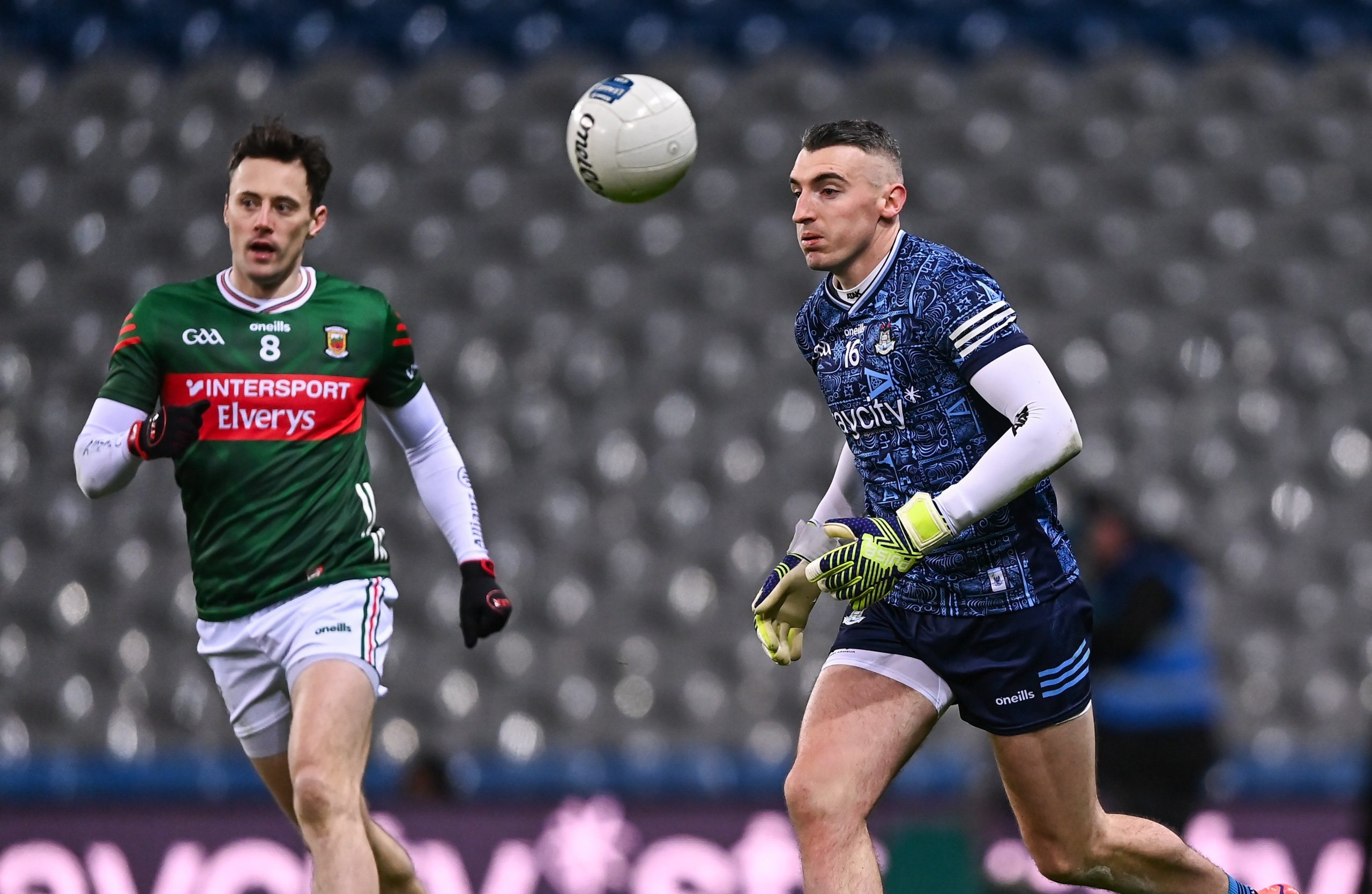By Patrick Morrison
THE year is 2050, a father has taken his Gaelic football mad son to the GAA museum as a birthday treat. As they walk around the many exhibits and read the history of each, the next one they stop at reads ‘Stephen Cluxton. Dublin goalkeeper winning 18 Leinster titles, nine All-Ireland titles, five NFLs and seven All-Star awards.’ The son turns to his father in amazement and says: “Daddy, did Gaelic football have goalkeepers when you played?”
Last weekend, we got to see the new rules in competitive action for the first time. After storm Éowyn battered the country on Friday some games had succumbed to the resulting damage which meant that Michael Murphy’s much debated debut as a goalkeeper will have to wait for another week.
All joking aside, the most common response I have received from people and seen on various platforms when discussing the new rules has been of doubt and apprehension.
The dubious feelings towards the rules can and may be simply due to it being the first time they have been seen in a competitive environment and with any new process may require more time for the general collective to process how they are working and how the game is now going to look in comparison to what it looked like last season.
The game has certainly changed. As a visual spectacle and indeed in a playing capacity, Gaelic football is no longer Gaelic football as we had been accustomed to.
I guess the apprehensive emotions people are feeling are possibly because they are worried that their beloved sport is having an identity change at present and people are trying to come to terms with whether they are comfortable with where the game may be heading.
They may also be trying to understand how the game will look in the coming seasons and if it will indeed create the better game that was felt needed by people who had become disenfranchised with Gaelic football. Simply put, implementing something completely brand new always comes with a certain level of uncertainty.
Although what you have read thus far may feel as negative comments, they are not! They are simply how everyone is feeling is some form or another about the first competitive showing of the rules. This is normal.
There were, of course, some great positives from last weekend’s games. For the most part the new rules did not cause any major controversy and were implemented very well by the officials. Most, if not all, the games were good scoring contests and the new two-point arc was put to good use in many games. The players’ adaptability should be commended, and this shows that any future amendments or introductions will be quickly implemented with minimal fuss.
But the elephant in the room remains i.e. – how will this work at the various club levels without incident and/or controversy. This remains to be seen.
From a goalkeeping perspective one rule has, in my humble opinion, had the opposite effect to that in which it was intended. When I first read the rule regarding the goalkeeper and when/where they are allowed to gain possession of the ball, it felt like the rule was intended to discourage teams from deploying their goalkeepers in an attacking form in their opponent’s half of the field. Simply because the distance they would have to travel before being allowed to receive the ball would be too great of a risk in the event of possession being lost and the goalkeeper being caught out of position.
This rule, coupled with the 3v3 rule, has now sent coaches into hyperdrive about using their goalkeepers as an extra attacking option.
Before the introduction of the new rules, there would have been maybe only five to eight teams that would have used their goalkeepers in this way. Now every team is either using it or is figuring out a way that they can use it.
Goalkeepers are now being asked to play in a way that they may never have before and on the flip side of this, if they are unable to do this they become surplus to requirement and the option of an outfield player stepping in to come out and attack is explored.
Since the beginning of the new year, I regularly get calls, messages and emails from coaches looking for information and advice on how to use their goalkeeper in this way. Some even ask about the best way to convert an outfield player into a goalkeeper for this exact reason.
I have no issues with this at all and every team is entitled to gain whatever advantage they can in their drive for success.
My biggest concern is the need to be careful we don’t cause the extinction of the goalkeeper position. Or at the very least it’s being evolved into a position that relies less on their current goalkeeping basic skills and more on an outfield skillset.
The kick-out mark was introduced to help ‘save’ the traditional midfielder whose ultimate skill was high fielding but with the modern evolutions of the game they were becoming a dying bread. The rules were changed to assist their continuing existence, and I would wonder will our goalkeepers be afforded the same luxury if/when the time comes? I hope so but the most rule changes over the past 20 years have directly affected the goalkeeper position more than any other.
It may never happen and could just be an irrational fear on my part, but in the current format of championship, there are teams that would be strong enough to beat weaker teams playing 15 outfield players and no goalkeeper. That is just the reality of how the gap between top and bottom has grown and is only ever going to get bigger unless sizeable measures are taken to reduce it.
With all the attention of coaches now fully focused on how their goalkeeper can give them the best advantage for their team within the new rules setting, it is imperative that they step back, take a deep breath and ask themselves ‘what is the most important part of my goalkeeper’s job?’ If they do this, I am confident it will give them better clarity regarding how they wish to utilise their goalkeeper.
Anyone that has asked me thus far has received the same answer. The most important role your goalkeeper will complete during games is goalkeeping, not attacking. Whatever advantage you may feel your goalkeeper can give your team going forward can be very quickly undone by inefficient goalkeeping on the defensive side of the ball.
If a goalkeeper must sprint back 80 metres after losing possession, they will not be fit to communicate properly due to hypoxia and therefore cannot marshal their defence correctly leaving their team vulnerable to attack.
They execute 20 to 30 kick-outs per game and with the new kick-out rules this is far more important to the number of attacks they will be involved in.
Finally, they could be involved in three to five big game situations (1v1, contested high ball, penalty etc) and because the frequency is lower than any other duty, their importance and margin for error significantly increases.
It is for this reason that coaches should ensure that their goalkeepers are ‘goalkeepers first.’
Email: pmgoalkeeping@hotmail.com
Facebook: @MSoG1
X: @MorSchGk
Receive quality journalism wherever you are, on any device. Keep up to date from the comfort of your own home with a digital subscription.
Any time | Any place | Anywhere













